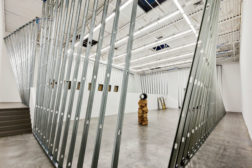Articles by William Hanley
Albi Grand Theater
Curtain Call: A simple box, dressed up with a curving metal screen, gives an ancient city a modern monument.
Read More
In Demand Cities: New Orleans
As a city moves from recovery to renaissance, it struggles to remain affordable.
Read More
Copyright ©2024. All Rights Reserved BNP Media.
Design, CMS, Hosting & Web Development :: ePublishing





